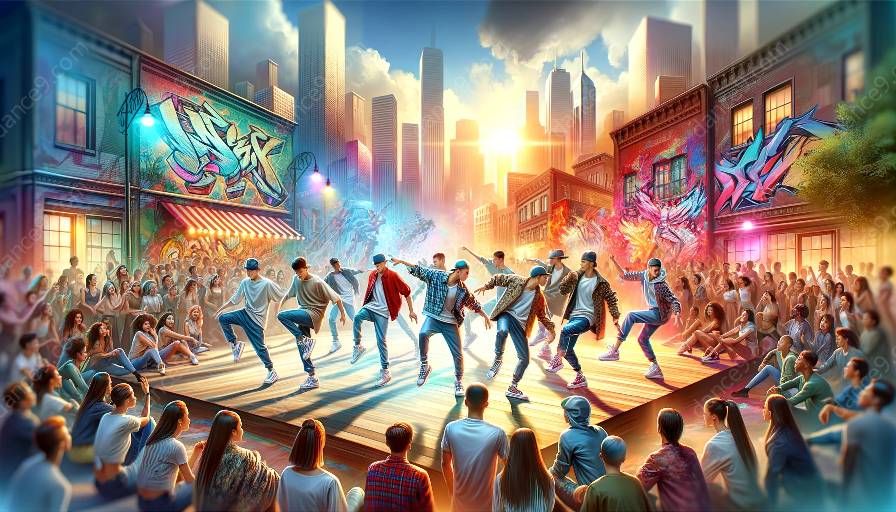Popular culture dance encompasses a diverse array of dance forms that reflect the ever-changing trends of contemporary society. One significant aspect of popular culture dance is the active involvement and engagement of the audience, which plays a pivotal role in shaping the experience and evolution of dance performances.
From flash mobs to interactive dance events, audience participation has become an integral element in the choreographic process, providing a unique avenue for dancers and choreographers to connect with their audience on a deeper level. This topic cluster aims to explore the multifaceted nature of audience participation in popular culture dance and its compatibility with choreography, shedding light on its impact on the art of dance.
The Evolution of Audience Participation in Popular Culture Dance
Historically, dance has always been a communal form of expression, often rooted in cultural traditions and rituals that involve active participation from the community. However, in modern popular culture, audience participation has taken on new dimensions, incorporating technology, social media, and immersive experiences to invite audiences to become part of the dance performance itself.
One notable example of this evolution is the rise of dance challenges and viral trends on platforms like TikTok, where users are encouraged to learn and perform specific dance routines, thus blurring the lines between professional dancers and enthusiastic amateurs. This democratization of dance has contributed to an unprecedented level of engagement and interaction between dancers and their audiences.
The Role of Audience Participation in Choreography
Within the realm of popular culture dance, choreographers have embraced the concept of audience participation as a tool for creative expression and community building. By designing choreography that incorporates elements of participation, choreographers are able to elicit emotional responses and create shared experiences that resonate with diverse audiences.
Moreover, audience participation has provided choreographers with invaluable feedback and insights into the impact of their work. Through observing the responses of the audience, choreographers can adapt and refine their choreography, ultimately enriching the overall dance experience for both performers and viewers.
Interactive Technology and Audience Engagement
With the advancement of interactive technology, popular culture dance has transcended traditional performance spaces, allowing for inventive ways to engage audiences. Interactive installations, motion-sensing technologies, and virtual reality experiences have enabled dancers and choreographers to immerse audiences in participatory dance environments, blurring the boundaries between performer and spectator.
This integration of technology has expanded the possibilities for audience participation in dance, fostering a sense of co-creation and collaboration between artists and their audiences. Through interactive technology, dancers and choreographers have harnessed the power of connectivity to forge new forms of artistic expression that transcend physical limitations.
The Impact of Audience Participation on the Future of Dance
The symbiotic relationship between audience participation and popular culture dance has redefined the landscape of contemporary choreography, paving the way for innovative and inclusive dance practices. As audience engagement continues to shape the evolution of dance, it is evident that the participatory nature of popular culture dance will continue to influence the creative direction of choreographers and the immersive experiences of audiences.
By embracing audience participation as a fundamental component of choreographic exploration, dancers and choreographers are not only breaking down barriers between performers and viewers but also fostering a sense of collective creativity and inclusivity within the realm of dance.
Conclusion
Audience participation in popular culture dance is a dynamic and transformative force that enriches the choreographic process and redefines the relationship between performers and audiences. This topic cluster has unveiled the intricate interplay between dance, choreography, and audience engagement, demonstrating how participatory experiences are shaping the future of popular culture dance.






































